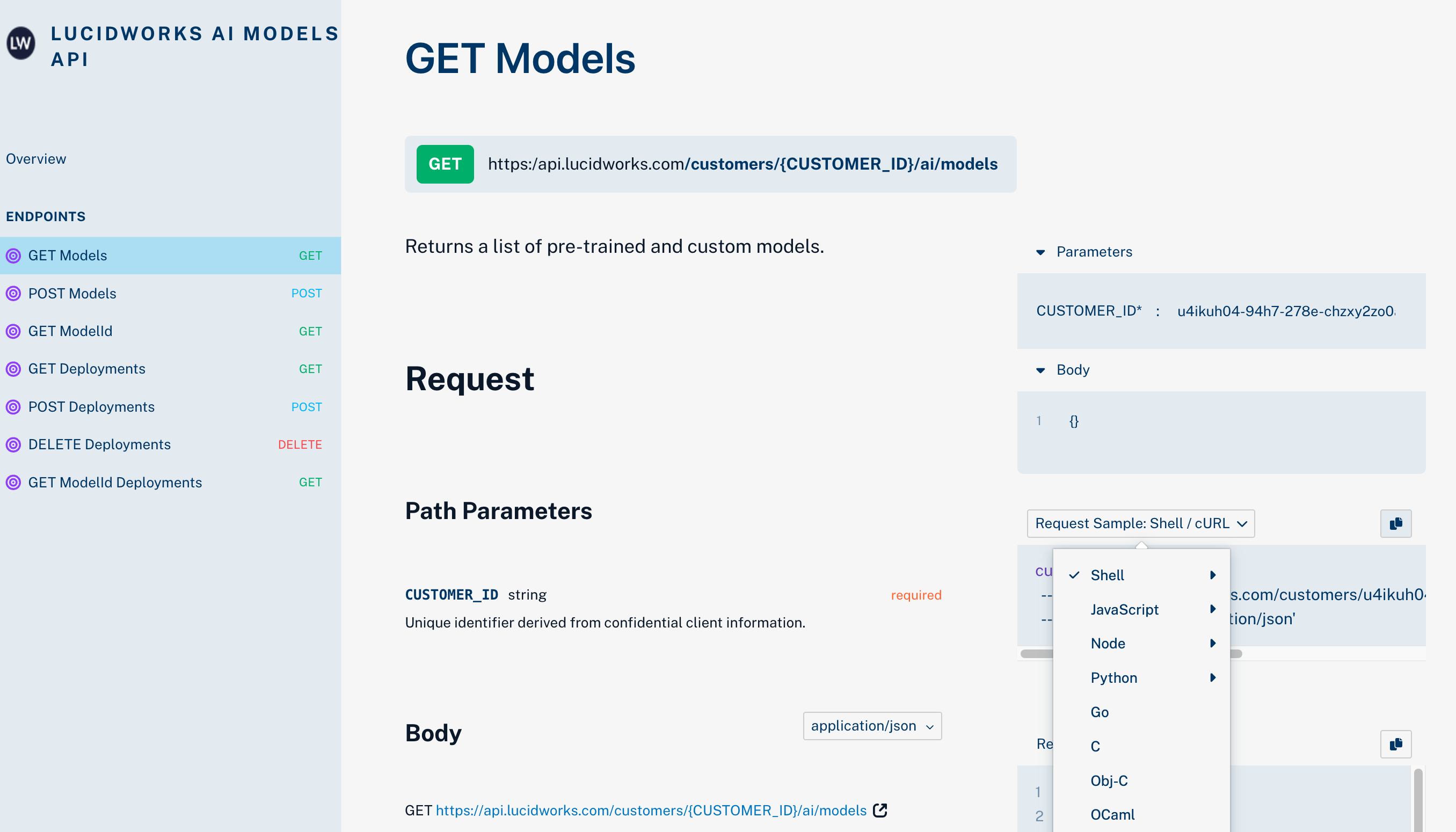Lucidworks AI APIs
Lucidworks AI offers several APIs for managing and automating your AI implementation. You can use them to train and manage models, run synchronous and asynchronous predictions, preview and debug pass-through prompts and embedding model tokens, and chunk text. Lucidworks AI APIs let you control and customize your AI orchestration to suit your business needs by enabling developer teams to build out bespoke integrations and implementations.
Authenticate with the APIs
Lucidworks AI APIs require you to authenticate using Java Web tokens (JWT) tokens. Generate these tokens using the Authentication API, then include them in the request header.
Use the APIs
You can use the Lucidworks AI APIs in addition to, or instead of, the Lucidworks Platform UI, but some actions are only supported with the APIs. For example, you can use the custom model training user interface or the Models API to train and deploy custom models, but running predictions and chunking text require you to use the APIs.
Some APIs are used in conjunction with other APIs. For example, use the Use Case API and Tokenization API to generate values for the Prediction API.
API specifications
Each API topic on the Lucidworks docs site contains a link to the API specification. Click View API Specification to open a modal that contains all related endpoints, parameters, and values.

You can use the API specifications to generate requests that you can copy and paste into your command line tool or code editor. Enter required fields, then click the Copy button to copy to your clipboard. You can also switch languages by selecting from the list.
